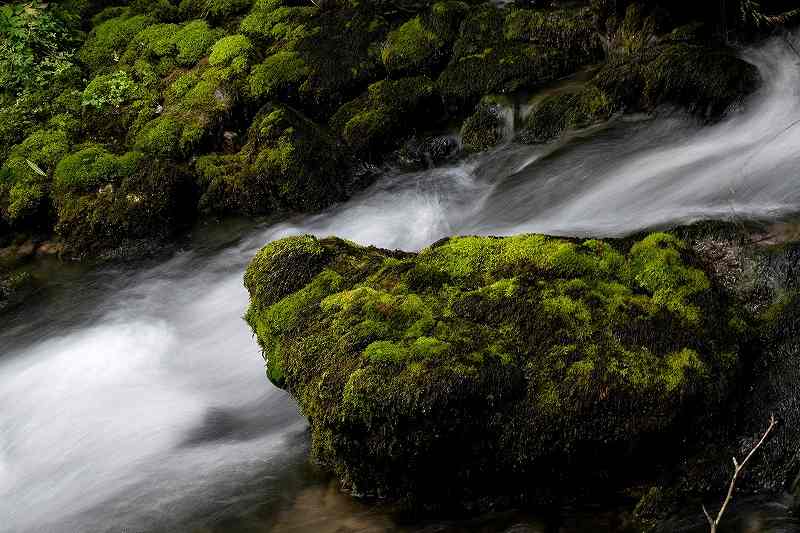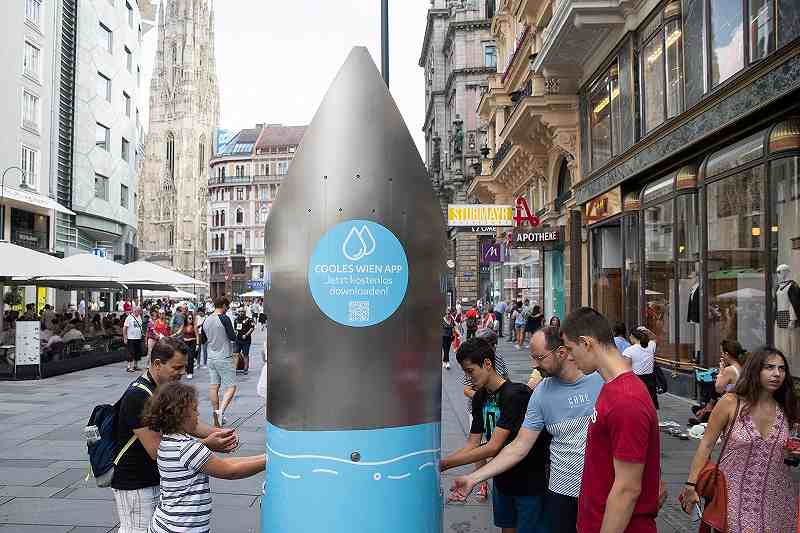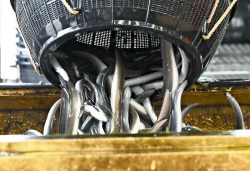
Fresh water is seen at the Klaeffer spring, near Gusswerk, Austria, on Aug. 30.
13:22 JST, October 21, 2022
VIENNA (AFP-Jiji) — As Europe suffered its worst drought in centuries, residents in Austria’s capital were feeling fortunate for their plentiful water supply that courses from streams in the green forests of the Alps.
A rarety in the EU, the two million inhabitants of Vienna get their tap water from dozens of springs — the main one some 655 meters above sea level.
It’s a serious subject in Vienna, where access to clean drinking water has since 2001 even been guaranteed in the constitution — a world first, according to the city’s website.
“Vienna is in the fortunate position that, as a city of millions, firstly, we have enough water and secondly, that it’s water of the best quality,” Juergen Czernohorszky, Vienna councilor in charge of the environment, told AFP.
The summer of 2022 was the hottest in Europe’s recorded history, as climate change drives ever longer heat spells and the drought parching the continent was the worst in at least 500 years.
Yet at the main Klaeffer spring feeding Vienna, some 150 kilometers outside the capital, the underground source bears water that is less than 6 C in temperature.
Some 10,000 liters per second flow out from the Klaeffer spring alone, feeding a river named Salza that coils down a steep uninhabited valley.
The water system was set up about a century and a half ago under the Austro-Hungarian Empire to provide the city with fresh water to overcome diseases such as cholera.
Today, the city’s sanctuary still encompasses 70 sources in untouched mountains south-west of the capital with a system of 130 aqueducts.
Thirty-one reservoirs in and around the city store the water, drawing officials from as far away as China to marvel at them, municipal water company Wiener Wasser spokeswoman Astrid Rompolt told AFP.
Each Viennese consumes around 130 liters of running water per day for some 30 euro cents ($0.30) — 15 cents cheaper than the same amount in Paris.
In Vienna, there is also enough to feed fountains, swimming pools, 1,300 drinking water fountains and even 175 mist showers that allow passers-by to cool off in the light spray.
The growing city plans to renovate 30 kilometers of pipeline per year to prepare for increasingly hot summers expected as the impacts of climate change intensify.

Water flows from a brass faucet in the former water tower of Vienna’s 1st high spring pipeline at Wienerberg water reservoir in Vienna on Aug. 22.

People refresh at a water dispenser in Vienna on Aug. 25.
"Science & Nature" POPULAR ARTICLE
-

Genome Study Reveals Milestone in History of Cat Domestication
-

Big Leap in Quest to Get to Bottom of Climate Ice Mystery
-

Security Camera Footage Vulnerable to Outside Access; Investigation Finds 3,000 Pieces Exposed Online
-

Paws on Parade: Nairobi’s Dogs Dazzle at ‘Pawchella’
-

Japanese Eels Escape New Regulation in Vote at CITES Meeting, Avoiding Higher Prices for Dealers and Diners
JN ACCESS RANKING
-

Keidanren Chairman Yoshinobu Tsutsui Visits Kashiwazaki-Kariwa Nuclear Power Plant; Inspects New Emergency Safety System
-

Imports of Rare Earths from China Facing Delays, May Be Caused by Deterioration of Japan-China Relations
-

University of Tokyo Professor Discusses Japanese Economic Security in Interview Ahead of Forum
-

Japan Pulls out of Vietnam Nuclear Project, Complicating Hanoi’s Power Plans
-

Govt Aims to Expand NISA Program Lineup, Abolish Age Restriction






















